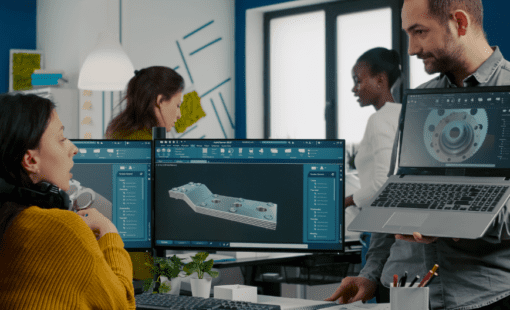The growing share of electronics and software in modern machinery products, not only leads to a growing complexity of the products themselves, but also to significant challenges for the evaluation and clarification of the customers’ requirements in the course of the quotation process. As quotations are frequently subject to challenging deadlines, they tend to be based on assumptions that are not corroborated by a thorough analysis by all stakeholders. The consequences are growing risks in terms of cost, quality and time-to-market issues.
The Importance of Fast and Accurate Decision-Making in Lead-to-Order Processes
An efficient and effective lead-to-order process is therefore crucial for maximizing sales opportunities, enhancing customer satisfaction, and driving business growth. The key to success lies in combining both speed and accuracy in decision-making. Under these circumstances, established based methods are quickly approaching their limits as they are time-consuming, subject to interpretation and difficult to track.
To enable electrical engineers to contribute to an efficient quotation process, three key capabilities are required:
- Access to up-to date and reliable data with the ability to synchronize electrical, mechanical, and software engineering activities.
- The ability to align product stakeholders at all levels by visualizing the solution, simplifying complexity, and capturing solution alternatives at an early stage.
- The ability to dynamically link the creation electrical of schematics, wiring diagrams and their variants and configurations to the product requirements requested by the customer.
By embracing model-based product development, organizations can unlock the potential to make faster and better product decisions. Models provide the necessary visibility, enhance stakeholder collaboration, and simplify complex processes. Encapsulating product complexity enables more efficient and accurate decision-making throughout the lead-to-order process.
Benefits of a Model-Based Approach in Machinery Industry
In the machinery industry, almost all products involve the integration of diverse engineering disciplines such as electrical, mechanical, and software engineering. To effectively bring these elements together, the concept of product architecture models plays a pivotal role. A product model not only visualizes the final product but also highlights its relationship to requirements. By making dependencies transparent, models enable more confident decision-making.
Models offer a unique advantage in managing complexity. They capture the intricacies of a product, making it easier to understand and work with. By using models early in the product development process, organizations can accelerate decision-making without compromising accuracy. This enables teams to evaluate different scenarios, assess dependencies, and make informed decisions quickly.
The stakeholders of engineering projects span a wide spectrum, including engineers, designers, project managers, clients, and end-users. Achieving alignment among these stakeholders is pivotal for successful product development. Visualizing the solution through comprehensive representation helps bridge communication gaps and fosters a shared understanding of the envisioned product.
Simultaneously, these visualizations simplify the inherent complexity of machinery systems, making intricate technical details more accessible to non-technical stakeholders. By capturing and exploring solution alternatives at an early stage, the decision-making process becomes more informed and adaptable, reducing the likelihood of costly changes downstream.
By dynamically linking product requirements to functional specifications and detailed designs, an MBSE based approach becomes particularly valuable in the integration of electrical and electronic engineering in the overall product development process: It ensures that the electrical design aligns precisely with the intended functionality. When a change is made to the product requirements, the corresponding modifications can be directly propagated to the schematics, wiring diagrams, and PCBs, thus maintaining consistency and reducing the likelihood of errors.
Improving Lead-to-Order Efficiency with MBSE Key Takeaways
In the lead-to-order process, the challenges faced in the machinery industry’s lead-to-order process underscore the importance of cross-disciplinary collaboration, stakeholder engagement, and robust technical integration. While a fast process is certainly important to address rapid turnaround times and customer satisfaction, speed alone should not the ultimate goal.
Instead, the focus should be on fast as well as on accurate decision-making. To achieve this, companies can leverage models to increase visibility, explore different scenarios, and align stakeholders. By adopting a model-based approach, companies can streamline their lead-to-order processes, make informed product decisions quickly, and gain a competitive advantage.
Further Reading
Enhancing the Lead-to-Order Process is just one of the many use-cases for Model Based Systems Engineering (MBSE). Download our Whitepaper How to use MBSE as an approach to solving critical challenges in the discrete manufacturing industry to receive a comprehensive guide to mastering product and process complexity with the help of a practice-oriented MBSE-based solution.
Download here





